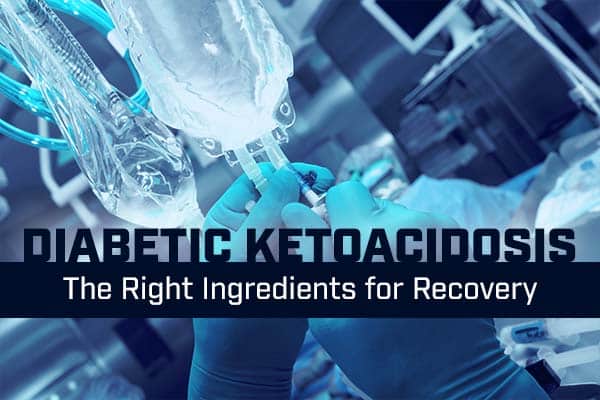Diabetic Ketoacidosis: The Right Ingredients for Recovery

This article is the first of a series of three articles about managing adult patients with diabetic ketoacidosis (DKA). This patient population can be quite challenging for even the most seasoned provider. Indeed, DKA is characterized by unique physiology that includes, amongst other things, severe fluid deficit and mild to severe metabolic acidosis. This patient population is even more challenging because they require treatments specific to their condition that cannot be extrapolated from other patient populations. In other words, what works best for patients in DKA will not necessarily apply to patients with metabolic acidosis or fluid deficit from other etiologies. To complicate things even further, they usually come in with multiple issues that must be dealt with simultaneously. This series of articles shed some light on the most up-to-date evidence-based medicine when dealing with patients in DKA. This article is not meant as medical advice. Always follow your local protocols.
We know that patients in DKA are “dry” when treated initially by front-line providers; They are severely dehydrated and need aggressive fluid resuscitation. Thus, one of the best things we can do for these patients (in addition to insulin) is to give them intravenous fluids. Normal saline is routinely used and is often the fluid of choice for many providers because it is cheap and readily available, but is it the best thing to give our DKA patients? Should we continue giving them normal saline or administer more balanced crystalloids such as Ringer’s lactate (RL) or Plasma-Lyte instead? Are all fluids equal when it comes to adult DKA patients?
A systematic review and meta-analysis of randomized controlled trials (RCT) published in January 2022 in the Critical Care Explorations shed some light on the question. The paper included 8 RCTs with a total of 482 patients and looked at the role of normal saline compared with balanced crystalloids (such as RL or Pplasma-Llyte) for fluid resuscitation in patients in DKA. The findings were quite surprising. Indeed, it turns out that patients given normal saline take more time to recover from DKA and are hospitalized for longer. Their plasma bicarbonate levels also take more time to stabilize, and they are more at risk of developing hyperchloremia (associated with acute kidney injury, decreased smooth muscle contractility, and metabolic acidosis) when compared to those who are treated with balanced crystalloids. The authors of the paper observed no significant effect on mortality.
These findings echo the exploratory ones from the SCOPE-DKA study published in 2021, which concluded that Pplasma-Llyte solution was associated with faster DKA resolution, no increase in ketone generation, and fewer adverse effects when compared to the use of normal saline (although the findings need to be confirmed in a large, Phase 3 trial).
In light of those recent studies, is it time to reconsider our approach for adult DKA patients regarding fluid resuscitation?
References
Link to the study from the Critical Care Explorations: https://www.ncbi.nlm.nih.gov/pmc/articles/PMC8740878/pdf/cc9-4-e0613.pdf
Link to the study for the SCOPE-DKA:
https://pubmed.ncbi.nlm.nih.gov/34609547/

Jean-Phillippe Lambert Ste-Marie
